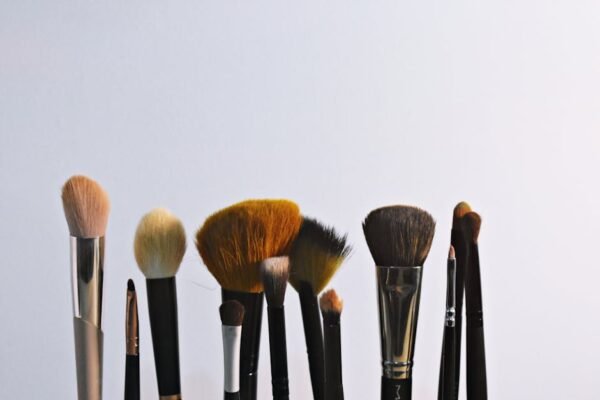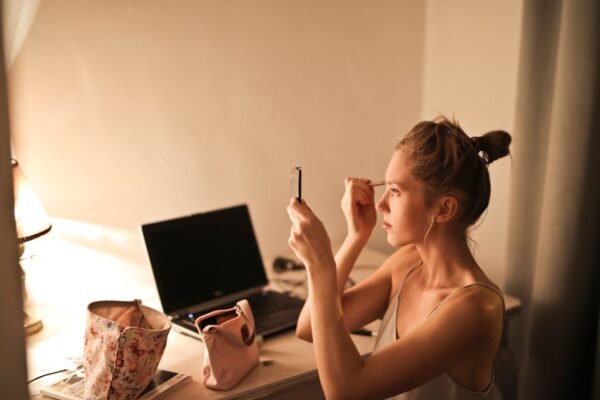What to Expect
{“type”:”img1″,”src”:”https://facehubs.com/wp-content/uploads/2024/03/fileUpload-37.jpg”,”alt”:”spa facial treatment”}Embarking on your first professional facial treatment can be both exciting and a little nerve-wracking. It's a journey towards healthier, more radiant skin, but knowing what to expect can ease any apprehensions. Most facials follow a standard protocol that includes cleansing, exfoliating, extracting, masking, and moisturizing. However, the specific products and methods used can vary widely depending on your skin type and the spa's offerings.
Before your treatment begins, your aesthetician should conduct a thorough consultation to understand your skin concerns and goals. This step is crucial as it guides the customization of your facial. Expect questions about your current skincare routine, any sensitivities, and what you're hoping to achieve through the facial treatment.
Preparation for a facial usually involves removing any makeup and having a clean face. It's also advisable to avoid using any harsh skincare products or undergoing other skin treatments that might irritate your skin in the days leading up to your appointment.
During the facial, communication is key. Your aesthetician should explain each step of the process and how it benefits your skin. If anything feels uncomfortable, it's important to speak up. A professional facial is not only about improving skin health but also about relaxation and pampering.
Immediately after your facial, your skin may appear more vibrant but also more sensitive. It's normal to experience some redness, especially if extractions were part of your treatment. Following post-facial care instructions, like avoiding direct sunlight and harsh products, will help maintain the results.
Benefits of Professional Facial Treatments
Professional facial treatments offer a deeper level of cleansing and care than what can be achieved at home. They are instrumental in removing dead skin cells, unclogging pores, improving blood circulation, and promoting skin renewal. Regular facials can also help manage various skin conditions such as acne, hyperpigmentation, and signs of aging.
One of the most immediate benefits you'll notice is an improvement in your skin's hydration. Facials deeply moisturize the skin, leaving it feeling soft and supple. This is particularly beneficial for those with dry or dehydrated skin.
Another significant advantage of professional facials is the expert advice and skin analysis provided by aestheticians. They can identify underlying skin issues that you may not be aware of and recommend products and routines that will work best for your skin type.
Facials also promote relaxation and stress relief. The massage techniques used during the treatment can help reduce tension in the face, leading to a reduction in the appearance of fine lines and wrinkles over time.
Lastly, investing in regular professional facials can have profound long-term effects on your skin's health. It can improve skin texture, tone, and overall appearance, making your skin look younger and more radiant.
Choosing the Right Facial Treatment
{“type”:”img1″,”src”:”https://facehubs.com/wp-content/uploads/2024/03/fileUpload-39.jpg”,”alt”:”choosing skincare products”}The beauty industry offers a myriad of facial treatments, making it overwhelming to choose the right one. The key is to focus on your specific skin concerns and look for treatments that target those issues. For example, if hydration is your main concern, look for facials that include hyaluronic acid or other moisture-rich components.
Consulting with a professional aesthetician can greatly help in making this decision. They can assess your skin and recommend treatments that will be most beneficial. It's also essential to consider the credibility and reputation of the spa or clinic. Opting for a reputable establishment ensures that you receive high-quality care and products.
Different treatments also involve varying levels of intensity. Light peels and non-invasive treatments are suitable for those new to facials or with sensitive skin, while more intensive treatments like microdermabrasion or chemical peels may be offered for those looking for more dramatic results.
It's also worth noting that some treatments may require downtime or specific aftercare. Be sure to discuss this with your aesthetician to fully understand what to expect post-treatment.
Ultimately, the goal of a facial treatment is to address your skin concerns in a soothing, pampering environment. With the right approach, facials can be a valuable addition to your skincare regimen.
Post-Facial Care Tips
Proper post-facial care is essential for maintaining the results of your treatment. Immediately after your facial, avoid applying makeup for at least a few hours to allow your skin to breathe and fully absorb the benefits of the treatment.
Avoiding direct sunlight and applying a high SPF sunscreen when going outside is also crucial. Your skin will be more sensitive and susceptible to sun damage post-treatment.
For the first few days after your facial, use gentle skincare products that are free from harsh chemicals and fragrances. Your aesthetician can recommend products that will complement the results of your facial.
Staying hydrated by drinking plenty of water and avoiding excessive caffeine and alcohol will also help extend the benefits of your facial. Hydrated skin is healthy skin, and it will visibly reflect the care it has received.
Finally, resist the urge to touch your face frequently. This can transfer bacteria and oils to your newly cleansed and treated skin, potentially causing breakouts.
How Often Should You Get a Facial?
The frequency of facial treatments can vary depending on your skin type and the specific concerns you're addressing. Generally, it's recommended to get a facial every 4-6 weeks. This timeframe allows your skin to go through its full life cycle of cell turnover and regeneration, making it the ideal time for another treatment.
However, for those treating specific issues like acne or hyperpigmentation, more frequent visits may be necessary at first. Your aesthetician can provide a tailored plan based on your skin's needs.
It's also beneficial to consider seasonal changes in your skin. For example, transitioning from winter to spring might require additional hydration-focused treatments to address dryness caused by cold weather.
In conclusion, the key to maximizing the benefits of professional facials is consistency. Making facials a regular part of your skincare routine can lead to significant improvements in skin health and appearance. Consult with a professional to find the best treatment plan for you.





